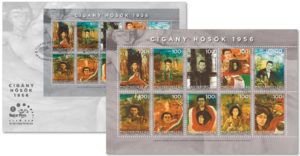The House of Terror Museum wishes to pay tribute to the historical achievements of the heroes of the Hungarian Gypsies with its new free-to-view temporary exhibition entitled Together Freely.
Gypsies have shared a common fate with Hungarians for many centuries. He served the common country with his talent, vitality, art, work and, if necessary, his life. However, too many times he had to endure in conditions that were more difficult than in mainstream society. Our aim is to present the prominent members of the Hungarian Gypsy community who, with their professional and public activities, contributed to the building of a self-conscious and proud Hungarian Roma community even during the years of the dictatorship. Thirty years after the system change, we also pay tribute to the heroes of the Hungarian Gypsies with this exhibition. Find out more about the exhibition on the museum's website.
The exhibition presents eleven Roma compatriots from different social backgrounds and occupations, who contributed to the building of the Hungarian Gypsy community, to the cultural development of Hungary, making it more colorful, or sacrificed their lives for the freedom of their country. Their story is connected by the responsibility they feel for their community, the will to do and perseverance.
At the exhibition, in addition to the posters made about them, interested parties can also view the short films of János Joka Daróczi and Gábor Bernáth. The House of Terror Museum provides information in the program brochure.
The institution emphasizes in its statement to MTI: The House of Terror Museum and the Public Foundation for the Research of Central and Eastern European History and Society have for more than ten years considered the search for Gypsy heroes and the presentation of their stories to be their priority. It is committed to commemorating the Roma heroes and drawing the attention of the wider public to the situation of the Hungarian Roma, as well as to show that the Hungarian Gypsies, with their activities, self-organization, embracing Gypsy issues, uplifting their communities, organizing their education and access to work, and their art, are contributing to their community and Hungary. served both. Béla Puczi, the hero of the Black March in Marosvásárhely in 1990, received a posthumous "Petőfi Memorial Plaque for his Stand" . Kossuth Prize-winning painter István Szentandrássy painted his 1956 series of portraits of gypsy heroes at the request of the museum, and Magyar Posta issued a series of stamps about gypsy heroes at the initiative of the Public Foundation. For many years, the Public Foundation has been making films about Gypsy heroes and supporting programs that commemorate Roma heroes; will continue this work in the future.

MTI
Source: House of Terror Museum
Inside image: MABEOSZ












